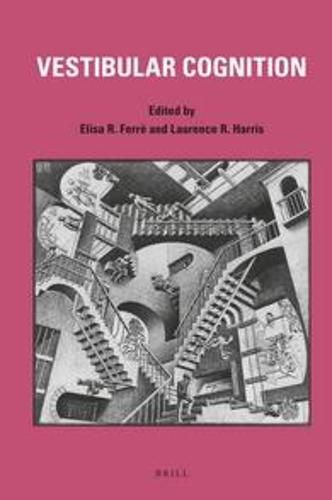Readings Newsletter
Become a Readings Member to make your shopping experience even easier.
Sign in or sign up for free!
You’re not far away from qualifying for FREE standard shipping within Australia
You’ve qualified for FREE standard shipping within Australia
The cart is loading…






In this volume specific cognitive sub-functions are identified and indications of how basic vestibular input contributes to each are described. The broad range of these functions is consistent with the broad spread of vestibular projections throughout the cortex. Combining vestibular signals about the head’s orientation relative to gravity with information about head position relative to the body provides sufficient information to map body position onto the ground surface and underlie the sense of spatial position. But vestibular signals are also fundamental to sensorimotor control and even to high-level bodily perception such as the sense of body ownership and the anchoring of perspective to the body. Clinical observations confirm the essential role of vestibular signals in maintaining a coherent self-representation and suggest some novel rehabilitation strategies.
The chapters presented in this volume are previously published in a Special Issue of Multisensory Research, Volume 28, Issue 5-6 (2015).
Contributors are: M. Barnett-Cowan, O. Blanke, J. Blouin, G. Bosco, G. Bottini, J.-P. Bresciani, J.C. Culham, C.L. Darlington, A.W. Ellis, E.R. Ferre, M. Gandola, L. Grabherr, S. Gravano, P. Grivaz, E. Guillaud, P. Haggard, L.R. Harris, A.E.N. Hoover, I. Indovina, K. Jauregu Renaud, M. Kaliuzhna, F. Lacquaniti, B. Lenggenhager, C. Lopez, G. Macauda, V. Maffei, F.W. Mast, B. La Scaleia, B.M. Seemungal, M. Simoneau, P.F. Smith, J.C. Snow, D. Vibert, M. Zago, and Y. Zheng.
$9.00 standard shipping within Australia
FREE standard shipping within Australia for orders over $100.00
Express & International shipping calculated at checkout
In this volume specific cognitive sub-functions are identified and indications of how basic vestibular input contributes to each are described. The broad range of these functions is consistent with the broad spread of vestibular projections throughout the cortex. Combining vestibular signals about the head’s orientation relative to gravity with information about head position relative to the body provides sufficient information to map body position onto the ground surface and underlie the sense of spatial position. But vestibular signals are also fundamental to sensorimotor control and even to high-level bodily perception such as the sense of body ownership and the anchoring of perspective to the body. Clinical observations confirm the essential role of vestibular signals in maintaining a coherent self-representation and suggest some novel rehabilitation strategies.
The chapters presented in this volume are previously published in a Special Issue of Multisensory Research, Volume 28, Issue 5-6 (2015).
Contributors are: M. Barnett-Cowan, O. Blanke, J. Blouin, G. Bosco, G. Bottini, J.-P. Bresciani, J.C. Culham, C.L. Darlington, A.W. Ellis, E.R. Ferre, M. Gandola, L. Grabherr, S. Gravano, P. Grivaz, E. Guillaud, P. Haggard, L.R. Harris, A.E.N. Hoover, I. Indovina, K. Jauregu Renaud, M. Kaliuzhna, F. Lacquaniti, B. Lenggenhager, C. Lopez, G. Macauda, V. Maffei, F.W. Mast, B. La Scaleia, B.M. Seemungal, M. Simoneau, P.F. Smith, J.C. Snow, D. Vibert, M. Zago, and Y. Zheng.